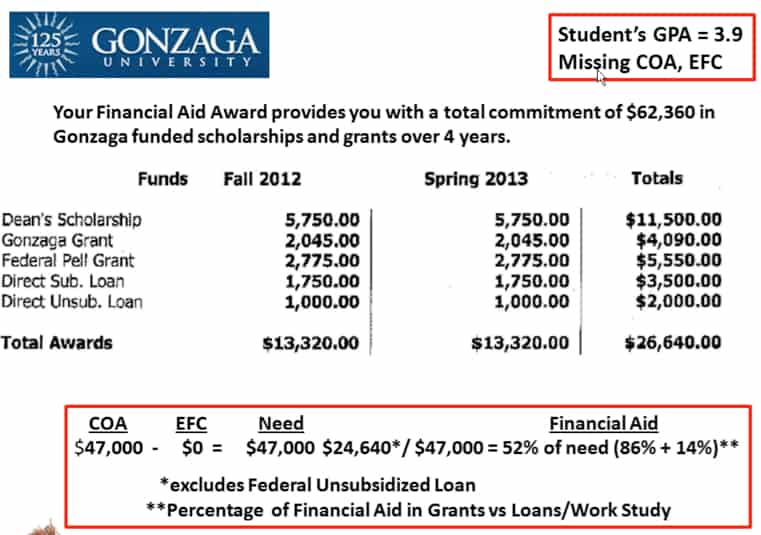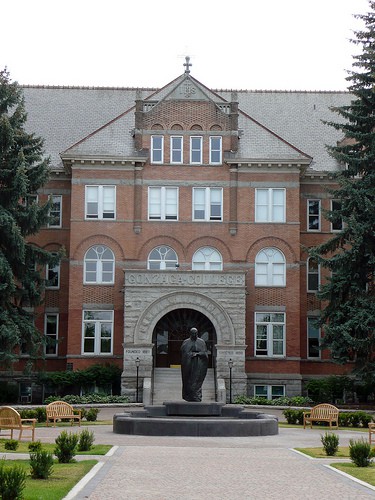
This is the second day that I’m devoting to evaluating financial aid letters.
If you missed it, here is the first post that I wrote on this important subject: What’s Wrong with This Financial Aid Letter?
Today I’m sharing another financial aid award that I obtained from Paula Bishop, a CPA from Bellevue, WA, who received this letter from a client.
This financial aid award comes from Gonzaga University. Bishop added everything that you see in the two red boxes. Take a look:
How Good is This Award?
It’s award letters like this that helps explain why I am such a higher-ed cynic.
This is a poor financial aid award and yet at the top of the award letter Gonzaga brags that the award provides a total commitment of $62,360 over four years. I assume the school is trotting out a four-year figure because it will appear more generous than the terrible one-year award this student actually received.
The four-year award wouldn’t look so good if the letter also noted that the four-year cost of the school will easily exceed $188,000.
A Close Look at the Gonzaga Award
The student who received this award is an excellent student (3.9 GPA) and is also poor. In fact, the student’s Expected Family Contribution is $0. A family’s adjusted gross income is automatically $0 if their adjusted gross income is $23,000 or less.
(This post explains what you need to know about Expected Family Contributions.)
The cost of attendance at Gonzaga is $47,000. With an EFC of $0, this family’s demonstrated need is $47,000.
Gonzaga is giving this child grants/scholarships worth $15,590 for the child’s freshman year. The school also inserted into the package the full federal Pell Grant for low-income students that’s worth $5,550 and a work study job (the screen shot doesn’t show the work-study job).
When you add up the three grants and the subsidized Stafford Loan (Gonzaga referred to it as Direct Sub. Loan), it pencils out to just $24,640. (It’s okay for colleges to include a subsidized Stafford in a package because it is geared toward low-income students and has special features compared to the regular Stafford Loan.)
When you add up the institutional and federal grants, subsidized Stafford Loan and work study, Gonzaga only meets 52% of this family’s financial need.
What’s Missing
Here is what the Gonzaga letter didn’t mention:
Expected Family Contribution.
Since the letter doesn’t include what the family’s EFC is, the parents would have no idea whether the award is a good one or not.
Cost of Attendance.
This is another glaring omission. If you don’t know what the total cost of the school is, how is any family expected to know what their total outlay would be?
Bottom Line:
This is a textbook example of a student being gapped. In this case, there is a huge gap between the financial assistance that the child neeeds to attend Gonzaga and what the school is willing to provide. I’d suggest it would be financial suicide for this low-income student to attend this school.
An Excellent Financial Aid Award
Now that you’ve seen two poor financial aid awards, in my next post I’m going to show you what an excellent financial aid award looks like.

